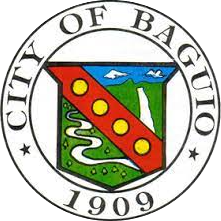 City Government of Baguio, the Philippines
City Government of Baguio, the Philippines

City Government of Baguio, the Philippines
Overview
Sector |
Agriculture, Food and Rural Development, Capacity Building, Climate Change, Development Cooperation, Health |
Country |
Philippines |
SDG |
01 - No Poverty, 02 - Zero Hunger, 03 - Good Health and Well-being, 04 - Quality Education, 05 - Gender Equality, 06 - Clean Water and Sanitation, 07 - Affordable and Clean Energy, 08 - Decent Work and Economic Growth, 09 - Industry, Innovation and Infrastructure, 10 - Reduced Inequalities, 11 - Sustainable Cities and Communities, 12 - Responsible Consumption and Production, 13 - Climate Action, 14 - Life Below Water, 15 - Life on Land, 16 - Peace and Justice Strong Institutions, 17 - Partnerships for the Goals |
Organization Type |
Government |
URL |
https://www.baguio.gov.ph/ |
Description
Similar Organizations
| Name | Sector | Country | |
|---|---|---|---|
United Nations Development Programme (UNDP) |
Development Cooperation, Disaster Risk Reduction, Natural Resource Management, Sustainability and Environment | United States of America | View Details |
Ethiopian Biodiversity Institute |
Agriculture, Food and Rural Development | Ethiopia | View Details |
University of Buea |
Agriculture, Food and Rural Development, Capacity Building, Education, Health, Industrial Development, Research, Science, Technology & Innovation | Cameroon | View Details |
China International Center for Economic and Technical Exchange (CICETE) |
Development Cooperation | China | View Details |
Municipal Secretariat for International Relations of São Paulo |
Development Cooperation, Law, Population, Research, Trade | Brazil | View Details |